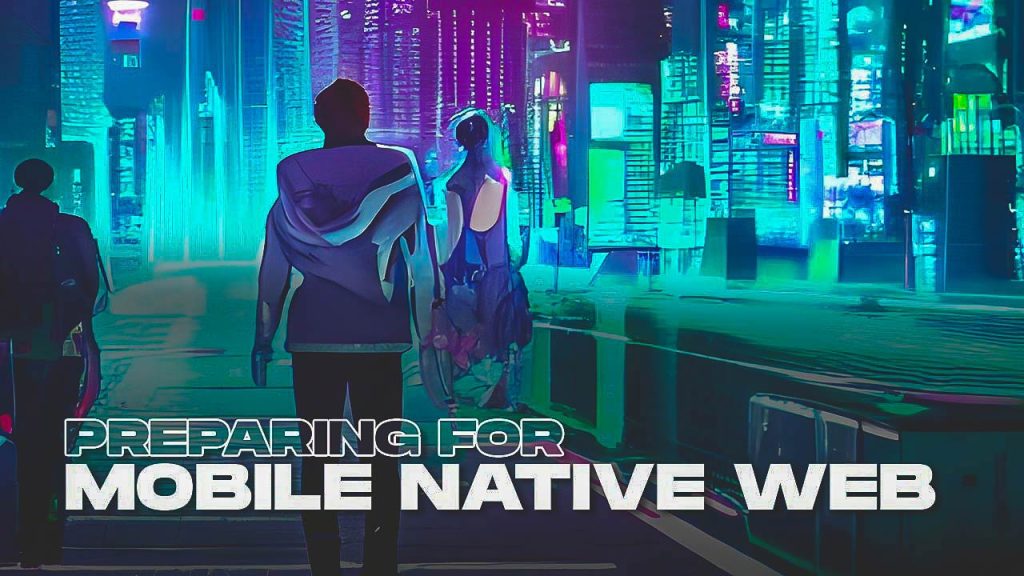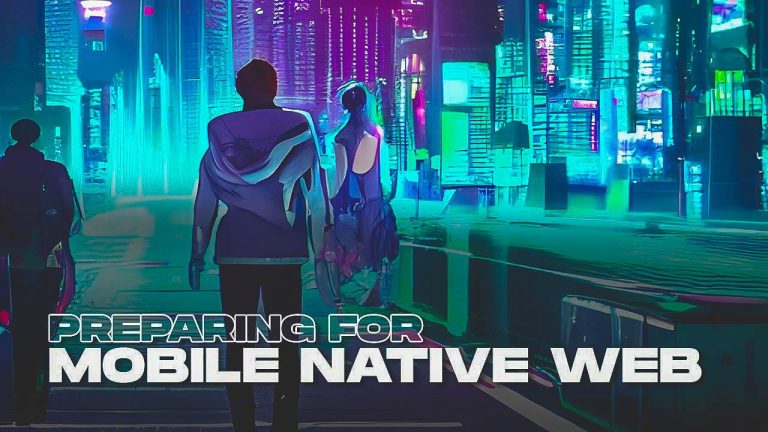
Preparing for a Fast-Approaching, Mobile-Native Web: Implications for Businesses, Creators, and Developers
The landscape of the internet is evolving at a rapid pace, with a paradigm shift towards mobile-native web. As we move further into the digital age, mobile devices are fast becoming the primary medium for accessing the internet, outpacing traditional desktops and laptops.
For businesses, creators, and developers, adapting to this new reality is not merely optional, but a necessity to remain relevant and competitive. This article explores how to prepare for this fast-approaching, mobile-native web, and how it can affect these three groups.
Online Businesses
User Experience (UX) Is Key
The shift to a mobile-native web means businesses must prioritize mobile-friendly user experience. Mobile users typically have less tolerance for cumbersome websites or apps, meaning that an intuitive, easy-to-navigate, and responsive design is essential.
Prioritizing the mobile user experience can increase customer satisfaction, boost conversions, and ultimately, drive business growth.
Localization and Personalization
With mobile devices being personal and always at hand, businesses have the opportunity to provide more localized and personalized experiences.
Leveraging technologies like GPS and machine learning can help deliver content tailored to users’ specific locations and preferences.
Mobile Commerce
The rise of mobile devices has given birth to mobile commerce or m-commerce. Businesses need to ensure that their online stores are mobile-friendly, offering seamless and secure shopping experiences.
Mobile payment solutions should also be integrated to facilitate easy transactions.
Digital Creators
Mobile-First Content Creation
For content creators, a mobile-native web means focusing on mobile-first content creation.
This includes creating bite-sized, easily digestible content and optimizing for vertical viewing, which is the natural orientation for mobile device use.
Leveraging Mobile Features
Creators should also make use of the unique features offered by mobile devices. For instance, augmented reality (AR) can be used to create engaging and immersive experiences.
Also, incorporating mobile-specific features like swiping, tapping, and pinching into content can make it more interactive and engaging.
Social Media & Mobile Platforms
Social media platforms, most of which are primarily accessed via mobile devices, are vital channels for content distribution.
Creators should optimize their content for these platforms, and also explore new mobile-native platforms to reach a wider audience.
Web Developers
Responsive Design
Developers must focus on responsive design, ensuring that websites and apps function optimally on various screen sizes and devices.
This involves careful planning and testing to ensure a smooth user experience across different platforms.
Mobile SEO
Mobile-native web means SEO is no longer just about desktop search.
Developers need to consider mobile SEO, which includes aspects like page load speed, mobile-friendly design, and structured data for rich snippets on mobile SERPs.
Progressive Web Apps (PWAs) and Accelerated Mobile Pages (AMPs)
Developers should also familiarize themselves with technologies like Progressive Web Apps (PWAs) and Accelerated Mobile Pages (AMPs).
PWAs combine the best of web and mobile apps, providing a high-quality, app-like experience on the web. AMPs, on the other hand, help create fast-loading web pages for mobile devices, improving user experience and mobile SEO.
A Brief History of the Web: From Early Beginnings to the Present
The Dawn of the Web
The web’s story begins in 1989, when British scientist Tim Berners-Lee, working at CERN, proposed a way to navigate the maze of information available on the internet. He conceptualized the World Wide Web, an interconnected system of documents and links.
In 1990, Berners-Lee developed the first web browser, named “WorldWideWeb” (later renamed to Nexus), and by the end of 1991, the web became publicly available.
The Web Expands
The mid-90s saw a flurry of activity as businesses realized the potential of the web. The browser wars began with Netscape Navigator and Microsoft’s Internet Explorer vying for dominance. In the same period, Yahoo!, Amazon, and eBay emerged, transforming the way we search, shop, and sell online.
Google Joins the Fray
Google’s story begins in 1996, when Larry Page and Sergey Brin developed “Backrub,” a search engine that analyzed backlinks to estimate a site’s importance. This project later evolved into Google, a name derived from ‘googol,’ signifying the vast amount of data the duo aimed to organize.
In 1998, Google Inc. was officially launched, and the PageRank algorithm, which was its distinguishing feature, quickly set it apart from other search engines.
Google’s Evolution
Google continued to improve its search capabilities throughout the early 2000s. In 2000, it launched AdWords (now Google Ads), a platform for businesses to advertise on the search engine.
2002 saw the introduction of Google News, while 2004 marked the debut of Google’s email service, Gmail. The same year, Google went public.
The defining moment of 2005 was the acquisition of a small video-sharing site called YouTube, which would become the world’s largest video platform.
In 2008, Google introduced Chrome, its own web browser, and in 2010, it launched Google Instant, providing search results as users typed their queries.
Mobile Revolution and AI Integration
With the rise of smartphones, Google started prioritizing mobile-friendly websites in its search results in 2015, a move dubbed “Mobilegeddon”.
Google’s search became increasingly intelligent with the integration of AI. The introduction of RankBrain in 2015, an AI system, helped Google process search results and provide more relevant search results for users.
In 2019, Google announced the use of BERT (Bidirectional Encoder Representations from Transformers), another AI technique, to better understand search queries.
The history of the web, with Google’s journey at its center, is a testament to the rapid pace of technological evolution. From the humble beginnings of interconnected documents to a mobile-native, AI-integrated web, it’s exciting to ponder what the future holds.
Google I/O 2023 Announcements
Fast forward to Google I/O 2023, the company announced several exciting developments:
Next-Gen Google Assistant:
Google showcased a new version of its Assistant, which is even more conversational, understands context better, and has advanced privacy features.
Upgraded Google Lens:
The Lens now supports real-time translation in more languages and can identify more objects, providing richer information to users.
Advancements in AR and VR: Google revealed new AR and VR features for Maps and Search, providing more immersive and interactive experiences.
Progressive Web Apps (PWAs):
Google announced new features and improved support for PWAs, making it easier for developers to build app-like experiences on the web.
The fast-approaching, mobile-native web presents a new set of challenges and opportunities for businesses, creators, and developers.
By understanding these changes and adapting accordingly, they can stay ahead of the curve, ensuring their relevance and success in the new digital landscape.

